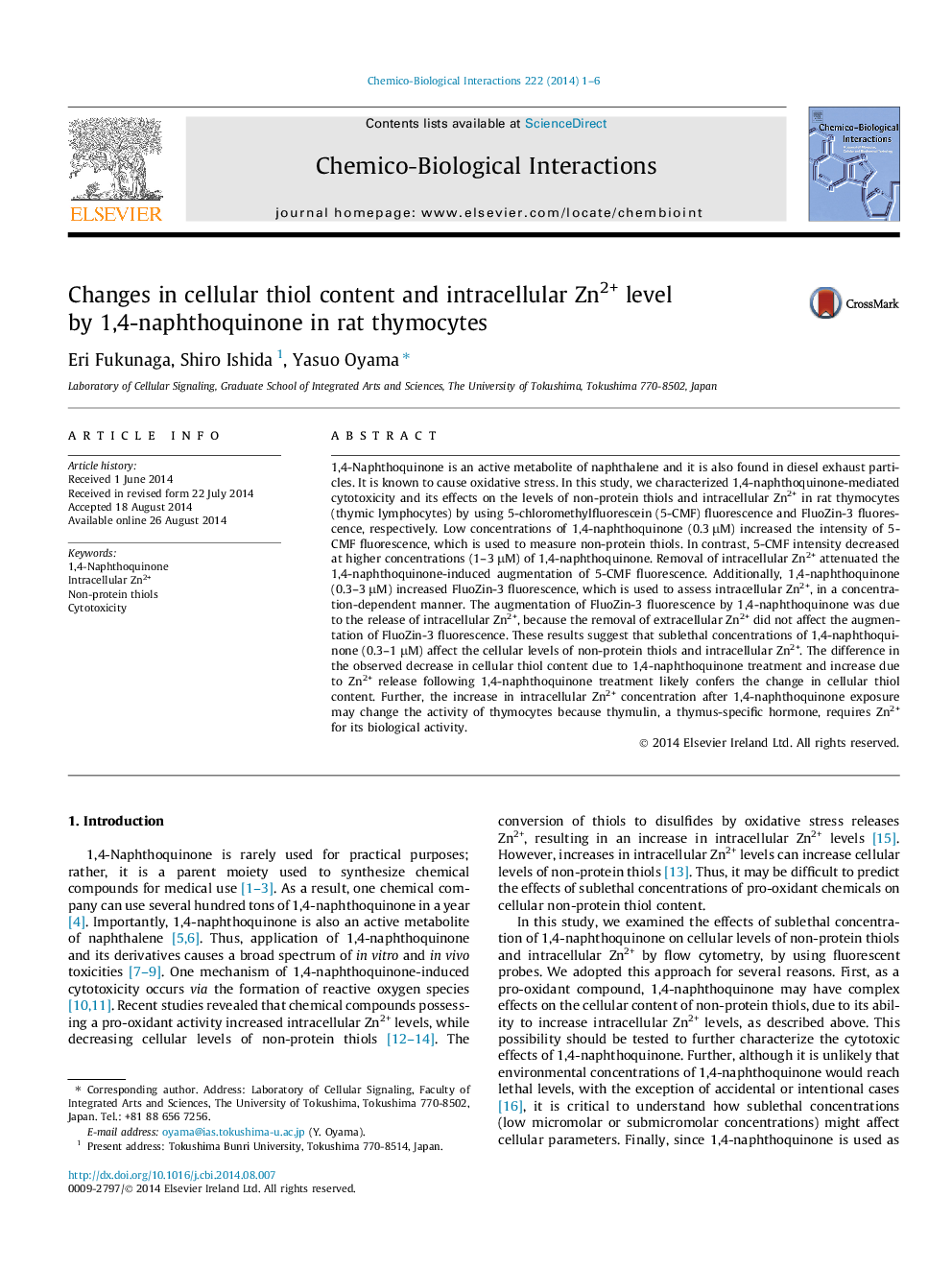| Article ID | Journal | Published Year | Pages | File Type |
|---|---|---|---|---|
| 2580346 | Chemico-Biological Interactions | 2014 | 6 Pages |
•1,4-Naphthoquinone (NQ), an environmental pollutant, induces oxidative stress.•Low doses of NQ (0.3 μM) increased cellular thiol content in rat thymocytes.•A decrease in thiols was observed at high concentrations (1–3 μM) of NQ.•The increase in thiol content was dependent on intracellular Zn2+ released by NQ.•NQ may change a cell susceptibility to oxidative stress.
1,4-Naphthoquinone is an active metabolite of naphthalene and it is also found in diesel exhaust particles. It is known to cause oxidative stress. In this study, we characterized 1,4-naphthoquinone-mediated cytotoxicity and its effects on the levels of non-protein thiols and intracellular Zn2+ in rat thymocytes (thymic lymphocytes) by using 5-chloromethylfluorescein (5-CMF) fluorescence and FluoZin-3 fluorescence, respectively. Low concentrations of 1,4-naphthoquinone (0.3 μM) increased the intensity of 5-CMF fluorescence, which is used to measure non-protein thiols. In contrast, 5-CMF intensity decreased at higher concentrations (1–3 μM) of 1,4-naphthoquinone. Removal of intracellular Zn2+ attenuated the 1,4-naphthoquinone-induced augmentation of 5-CMF fluorescence. Additionally, 1,4-naphthoquinone (0.3–3 μM) increased FluoZin-3 fluorescence, which is used to assess intracellular Zn2+, in a concentration-dependent manner. The augmentation of FluoZin-3 fluorescence by 1,4-naphthoquinone was due to the release of intracellular Zn2+, because the removal of extracellular Zn2+ did not affect the augmentation of FluoZin-3 fluorescence. These results suggest that sublethal concentrations of 1,4-naphthoquinone (0.3–1 μM) affect the cellular levels of non-protein thiols and intracellular Zn2+. The difference in the observed decrease in cellular thiol content due to 1,4-naphthoquinone treatment and increase due to Zn2+ release following 1,4-naphthoquinone treatment likely confers the change in cellular thiol content. Further, the increase in intracellular Zn2+ concentration after 1,4-naphthoquinone exposure may change the activity of thymocytes because thymulin, a thymus-specific hormone, requires Zn2+ for its biological activity.
Graphical abstractFigure optionsDownload full-size imageDownload as PowerPoint slide
